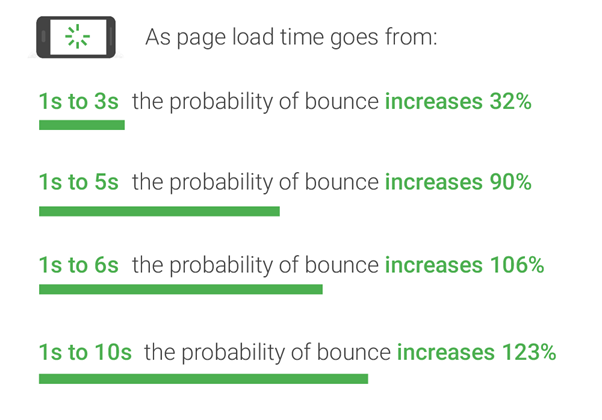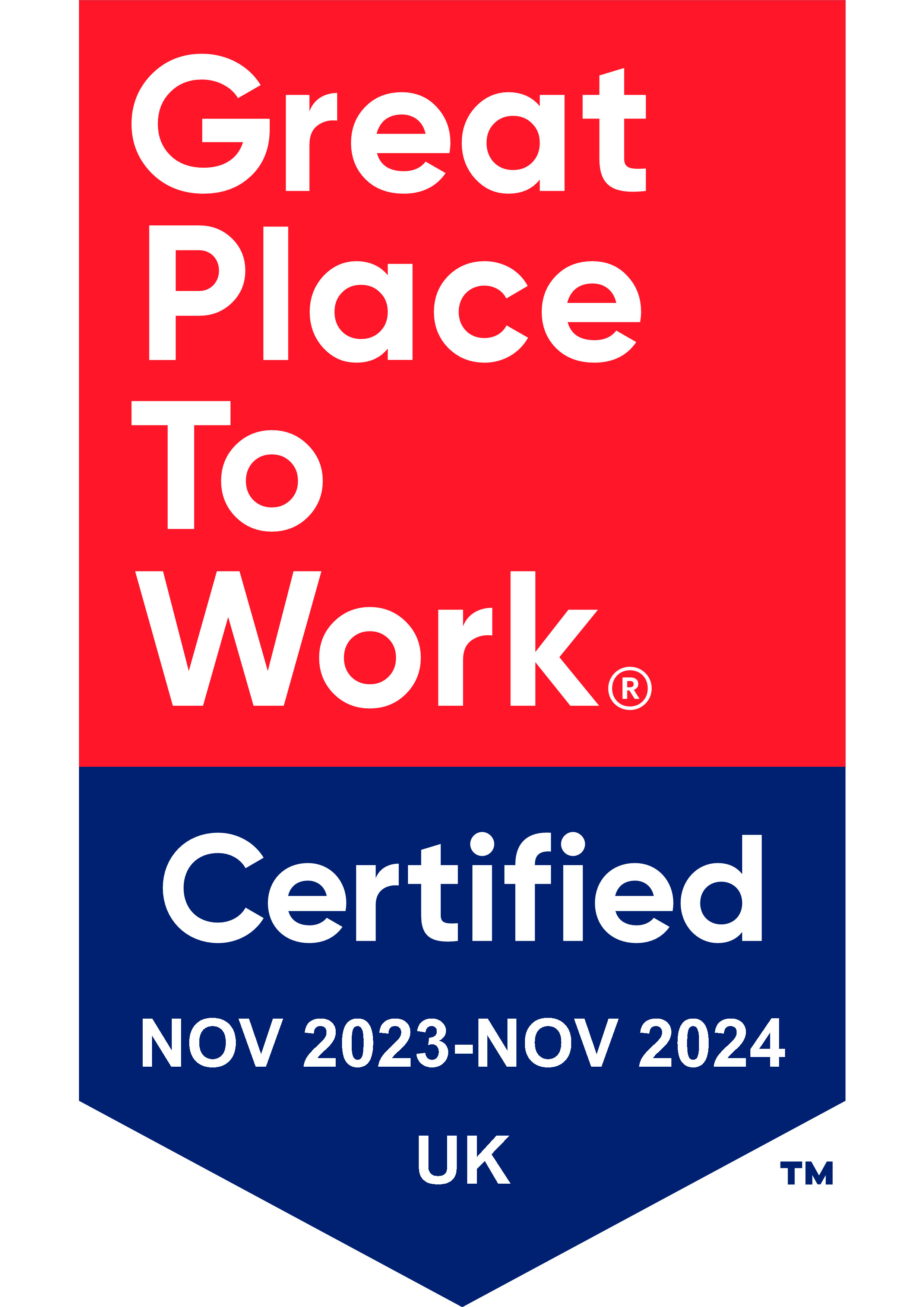There’s always a lot of noise made by SEOs and digital marketers about website load time and how important it is to the success of any online business. But what is considered ‘slow’ or ‘fast’ when it comes to site loading times? Does it really make much difference to the user experience? And, very importantly, does it have an impact on ecommerce sales?
Why website speed matters for ecommerce
Site speed matters so much for a number of different reasons, which include:
- Website load time is an important ranking signal for search engines
- Load times can make a big difference to user experience
- Load times can have a big effect on online sales
We look at each of these in more detail below.
Website load time is an important ranking signal for search engines
The amount of time that a webpage takes to load has long been something that SEOs have been concerned about, but Google officially made it part of their Core Web Vitals update, which rolled out in 2021.
Core Web Vitals are a set of measurements that Google take from a webpage to indicate its ‘health’ from a user experience point of view, across all devices.
The idea is that websites which pass the Core Web Vitals assessments will not be penalised in organic search results, whereas sites with multiple pages that take too long to load, amongst other things, may struggle to achieve top rankings, even if other areas of their SEO strategy are on-point.
Load times can make a big difference to user experience
A survey by Unbounce reveals that page speed has an impact of the willingness to buy online for nearly 70% of consumers. The same survey indicates that half of online shoppers would be willing to forsake website video content and animations if it means that the pages loaded more quickly.
We know how much people love video content, so if a faster loading speed is more important to ecommerce customers, it’s worth taking notice of this in your SEO strategy and UX strategy. Other research shows that 79% of customers say they won’t go back to a website that performed poorly.
Load times can have a big effect on online sales
Research shows that ecommerce website load speed can have a significant impact on sales, with the highest ecommerce conversion rates occurring on pages that have a load time of between 0-2 seconds.
The same study indicates that conversion rates drop by an average of 4.42% with every additional second that it takes the page to load (between 0-5 seconds), which means that each second really does count when it comes to generating online sales.
What is a good (or bad) page load time?
According to Google, pages should ideally load on mobile and desktop in less than 3 seconds.
The bounce rate probability increases significantly with each additional second it takes to load, literally meaning that your ecommerce site is losing potential customers by the second.

Page load time depends not only on the website itself, but also the internet connection of the user accessing it, although with much of the UK having at least a 3G connection these days in most areas, it’s important for ecommerce brands to focus on the part that they can control; their own pages.
Testing your ecommerce site’s load speed
It’s important to understand your starting point when making a plan to improve site speed, so you need to get an accurate picture of current page performance. It’s also important to make sure you test all of the pages that shoppers regularly land on, not just the pages which convert best. You could potentially unlock new levels of performance by focusing on the user experience when people first land on your ecommerce site.
There are a few different tools around that you can use to test the load speed of different pages on your website. A great place to start is with the Core Web Vitals reports in Google Search Console (GSC).
This will highlight the URLs that pass Google’s criteria and those which need work. It should be noted that GSC doesn’t necessarily give you every single URL that needs work, it often provides a sample (approx. 20 pages) for each type of issue, which might mean that more detective work is needed to get the full details.
You can also see stats like the average page load time in Google Analytics (GA), under the Behaviour tab, which lists the URLs and can help flag any pages which have a very high or low load time, so you can learn from what is working well on the faster-loading pages and what isn’t so much on the slower ones.
However, it’s worth taking the information from GA as a loose guide rather than 100% accurate data, as people often find what they see in GA doesn’t exactly match with what’s seen in other third-party speed test tool results.
If your customer-base is global, you might want to run site speed tests from different locations to find out what experiences your visitors from outside the UK are having with your site speed. A good tool for this is WebPageTest, using their advanced filters to change the location etc, but it can take time to run several pages. GTmetrix is another tool than offers free speed testing for individual URLs, although the advanced features and filters require a subscription.
How to speed up an ecommerce website
Just because you’ve discovered which pages of your website are having speed problems, it doesn’t automatically mean that you know exactly why it’s happening or how to fix the issues. However, we’ve listed some of the most common problems and resolutions below.
Optimise and compress large HTML, CSS and JavaScript files
Anything larger than 150 bytes can potentially cause some page speed issues as all of these elements need a http request to be made, so it’s important to enable compression of these files. A software application like Gzip is commonly used for this. Before you do that, however, it’s fairly common that cleaning up the code can also help reduce the size before compressing. Removing things like spaces, commas, code comments and formatting can really help. Find out more about what Google says about ‘minifying’ code and how to do it.
Optimise images and other visual content
There is always a balancing act when it comes to image and visual content compression between file size and quality. Finding the sweet spot can sometimes take a few attempts, but using the right kind of image file can really help.
For photos, a WebP or JPEG file type is often the best option for web, with the image coming in at under 80 kb.
PNGs generally have a larger file size, but for graphics with fewer than 16 colours, it can be the best option. There are plenty of free online tools for compressing your images (such as CompressJPEG and TinyPNG) and they can also be compressed before exporting from design tools like Photoshop and Canva. Find out more about optimising visual content.
Avoid multiple redirects
Page redirects can easily stack up over time on webpages, whether it’s after a site migration, a change to structure or maybe content consolidation or site merging.
Each redirect means that a different request needs to be processed before the page loads, so multiple redirects can mean that this delay is significant. By updating the original link/redirect to one that leads only to the current page, you can cut out anything in between and help to minimise this loading time.
There are many other factors that can have an impact on page load speed, such as your site’s hosting server size and setup, your DNS provider, and browser caching settings. Moz have a really in-depth guide on this if your initial fixes of the more common problems aren’t having the expected impact.
We’re an experiences, award-winning ecommerce SEO agency that can drive organic performance for your brand, and our team would love to hear from you. Use the form below to get in touch.








